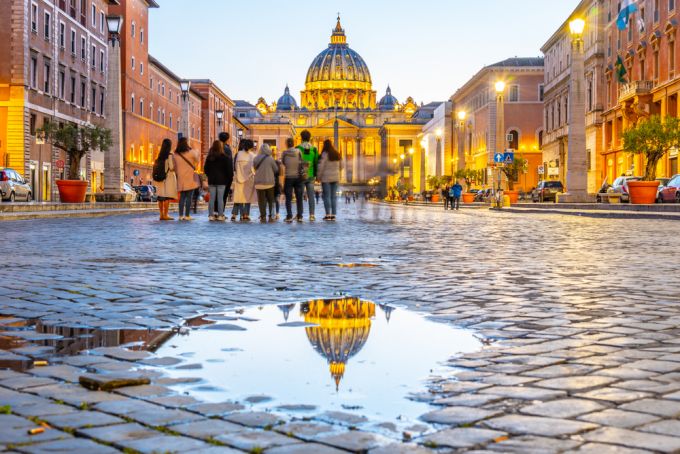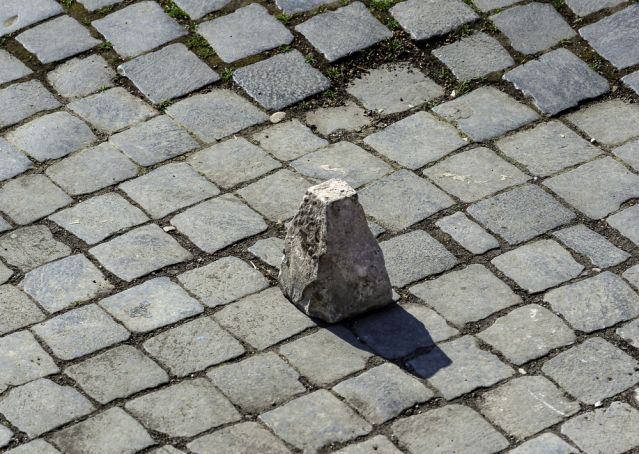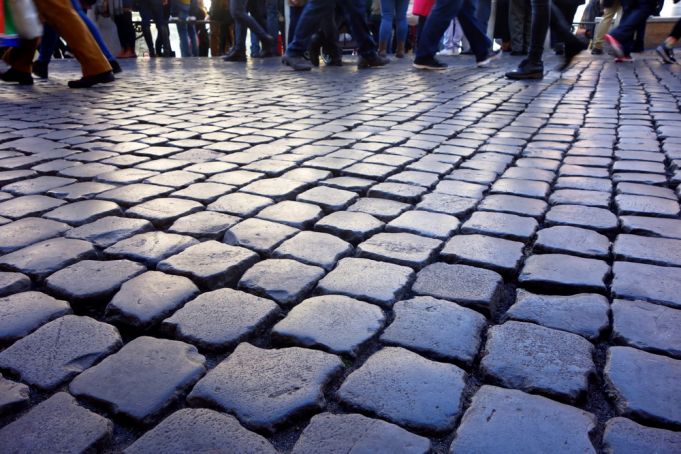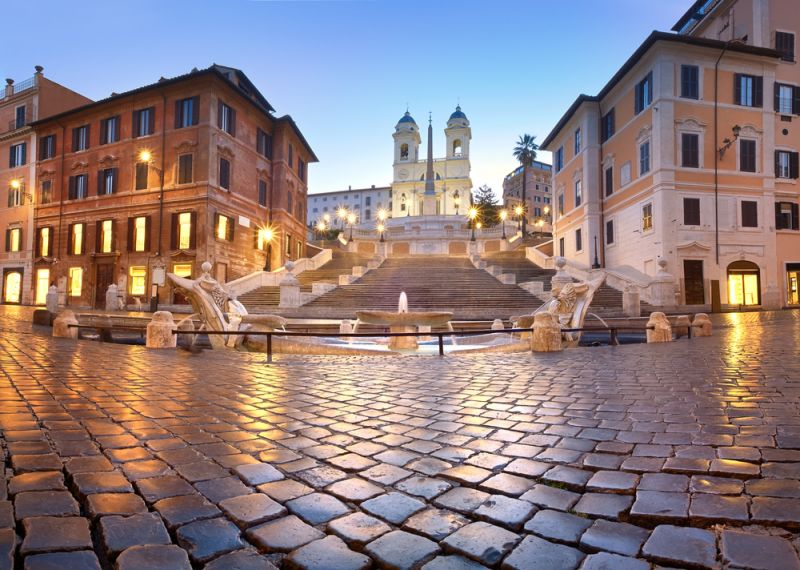Rome’s conventional cobblestones are cherished and hated in equal measure.
Rome wouldn’t be the identical with out its ubiquitous cobblestones, identified regionally as sampietrini, which carpet the streets and alleyways of town’s historic centre.
Though an undoubted image of Rome, and much-photographed by vacationers, the sampietrini (identified by some as sanpietrini) are a supply of debate and division amongst Romans.
The purists defend the normal position of the basalt stones within the panorama of the Everlasting Metropolis, nonetheless motorists – notably these on two wheels – beg to vary.

They are saying the sampietrini are unsuitable for contemporary transport, offering a bumpy journey and – when it rains – a treacherous floor for motorbikes and scooters.
Neither are they excellent for pushing strollers over, or strolling throughout in excessive heels.
They add to the noise of site visitors whose vibration causes harm to surrounding buildings, whereas a lacking sampietrino poses apparent risks to motorists.
Nonetheless, along with their aesthetic high quality, the common-or-garden sampietrini have sure benefits: they’re strong however fast to take away when required, they provide simple drainage and may be reused.
As for the sampietrino itself, it’s a pyramid-shaped block of volcanic rock, reduce by hand after which hammered right into a sand base with mallets till it varieties a fair – or comparatively even – floor.

The rock initially got here from quarries round Rome, on the foot of the Alban hills but in addition round Viterbo, nonetheless in 2000 town imported machine-made stones from China in a bid to spruce up the capital for the Jubilee yr.
In recent times Rome has eliminated the historic cobblestones from streets used closely by site visitors, which in flip have been asphalted, leaving a skinny border of sampietrini to function a reminder of what as soon as was.
The stones faraway from busy streets are being taken to quieter, slim streets that are both pedestrianised or have little or no site visitors.
Essentially the most high-profile road destined to be paved with sampietrini is By way of del Corso, town’s predominant thoroughfare, between Piazza del Popolo and Piazza Venezia.
Hyperlink between Rome and sampietrini
The story dates again to the tip of the sixteenth century after they have been first used within the space round St Peter’s below the preach of Sixtus V (1585-1590).
As for its title, the time period sampietrino / sanpietrino was born in 1725 to explain the brand new paving stones in Piazza San Pietro.
Their use turned extra widespread within the early 18th century below Pope Clement XII Corsini who oversaw in depth constructing programmes in Rome.

The sampietrino is available in numerous sizes in keeping with the sampietrino.it web site: the most important measure 12×12×18 cm; the most typical ones are 12×12×6 cm; whereas the smallest ones, 6×6 cm, are very uncommon however may be present in sure areas of Rome reminiscent of Piazza Navona.
In recent times town’s conventional sampietrini have been joined by a whole lot of brass cobblestones, every with its personal devastating story to inform.
These memorials are known as stolpersteine in German, or actually translated “stumbling stones” and are put in outdoors the final chosen place of residence of victims of the Holocaust.
Throughout Italy’s covid lockdown within the spring of 2020, grass grew between town’s sampietrini, most noticeably in Piazza Navona and Piazza del Popolo, which have been coated in a inexperienced carpet.

